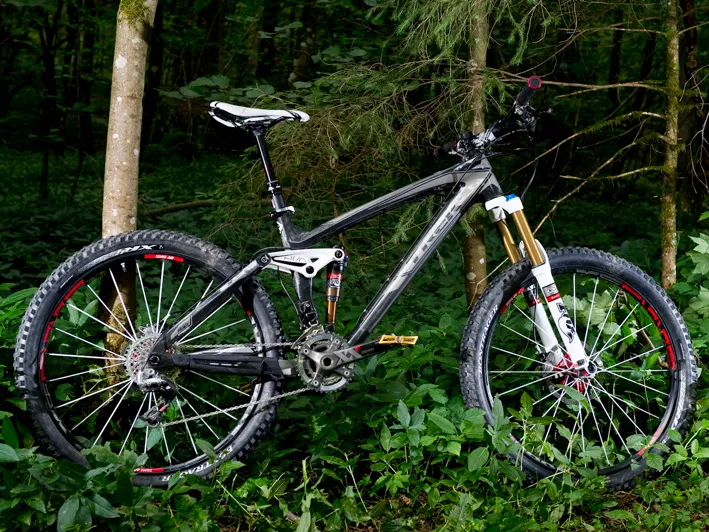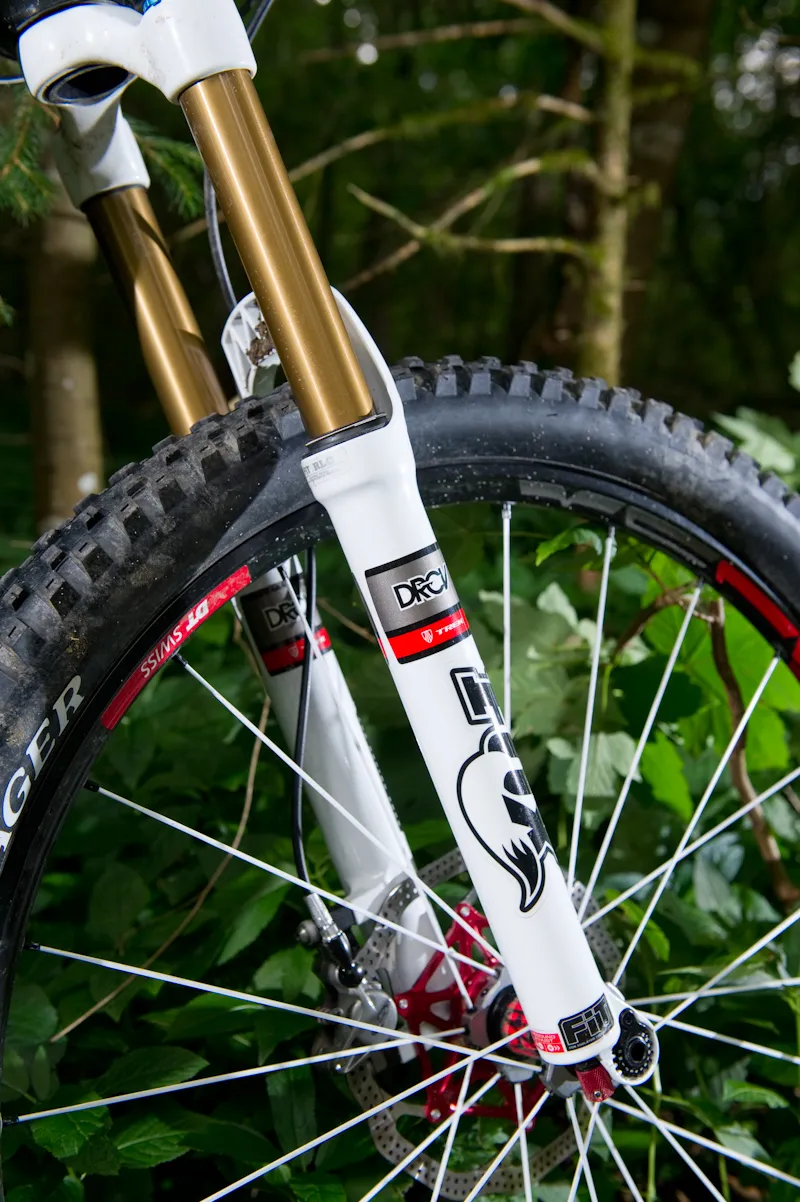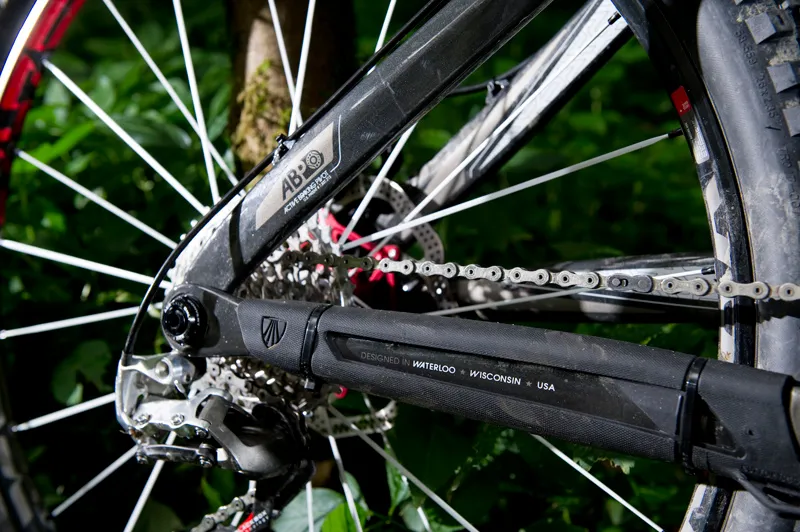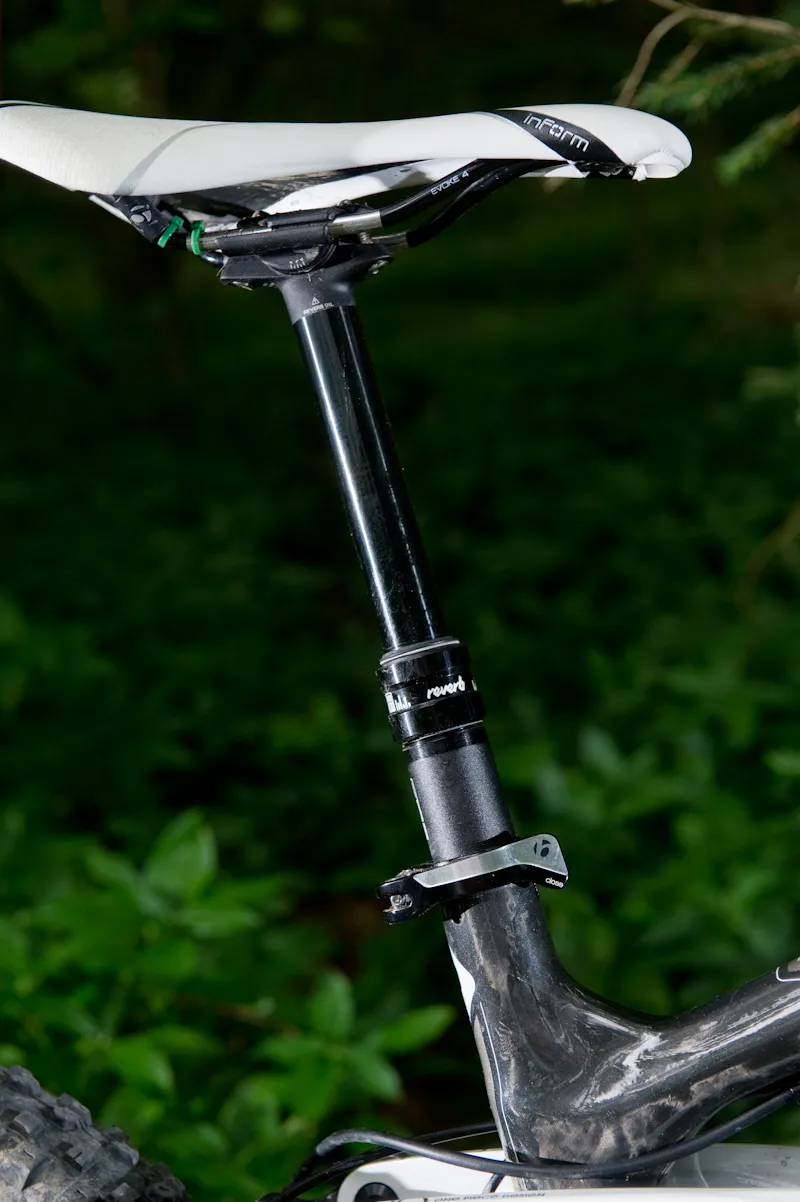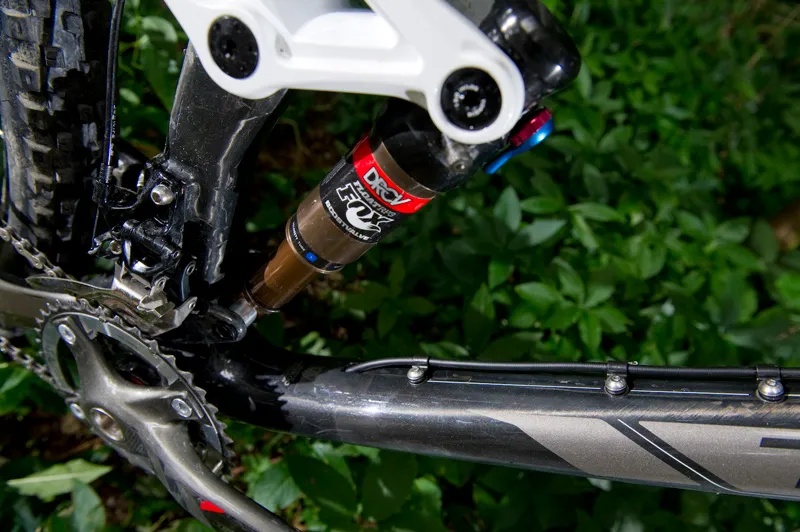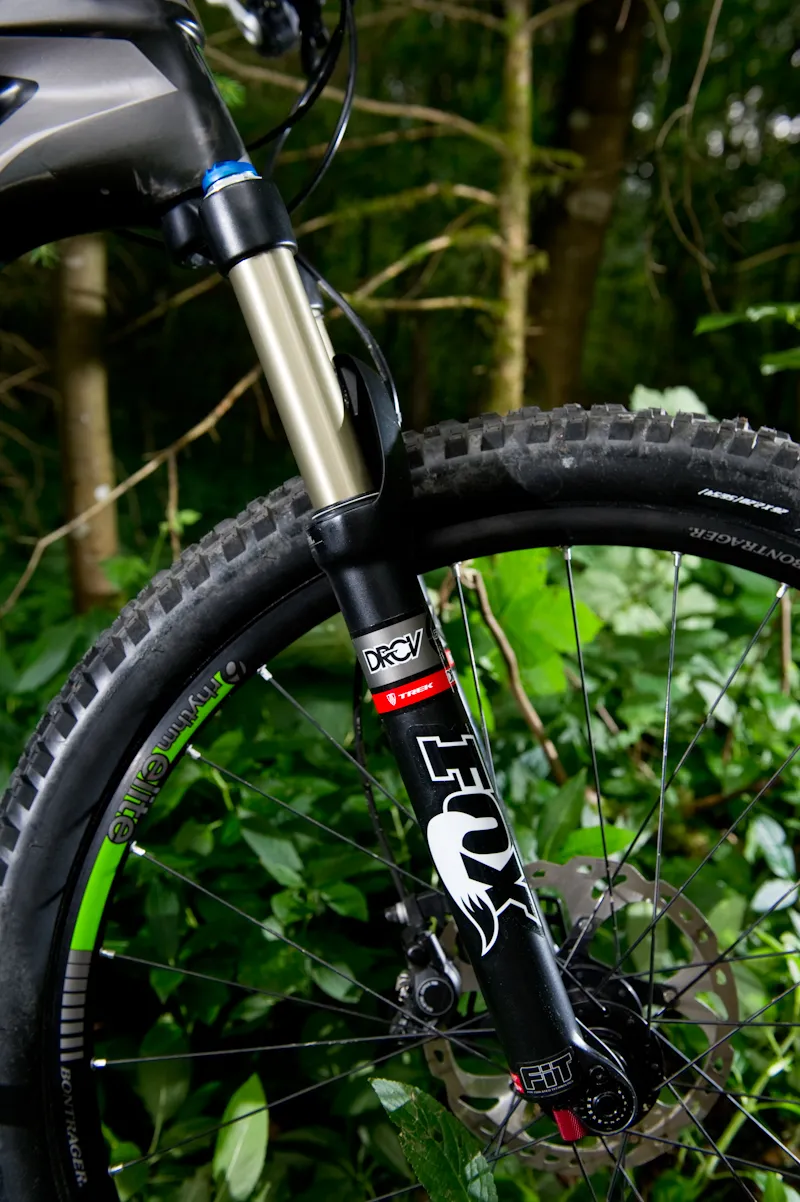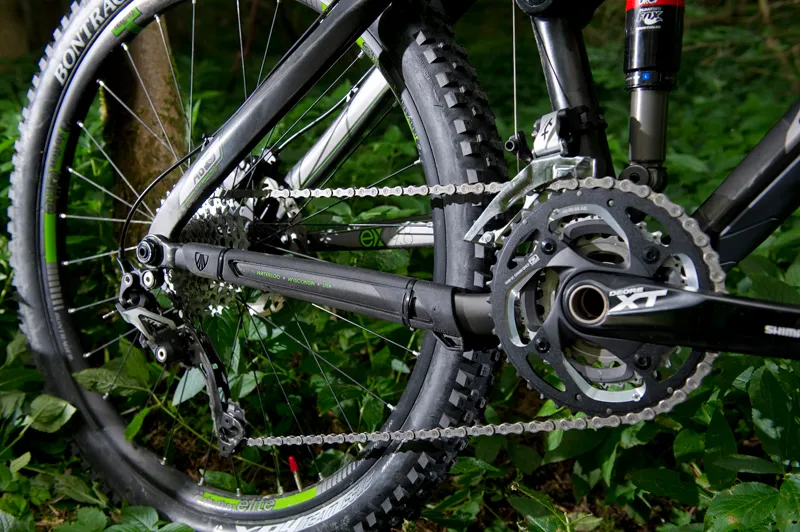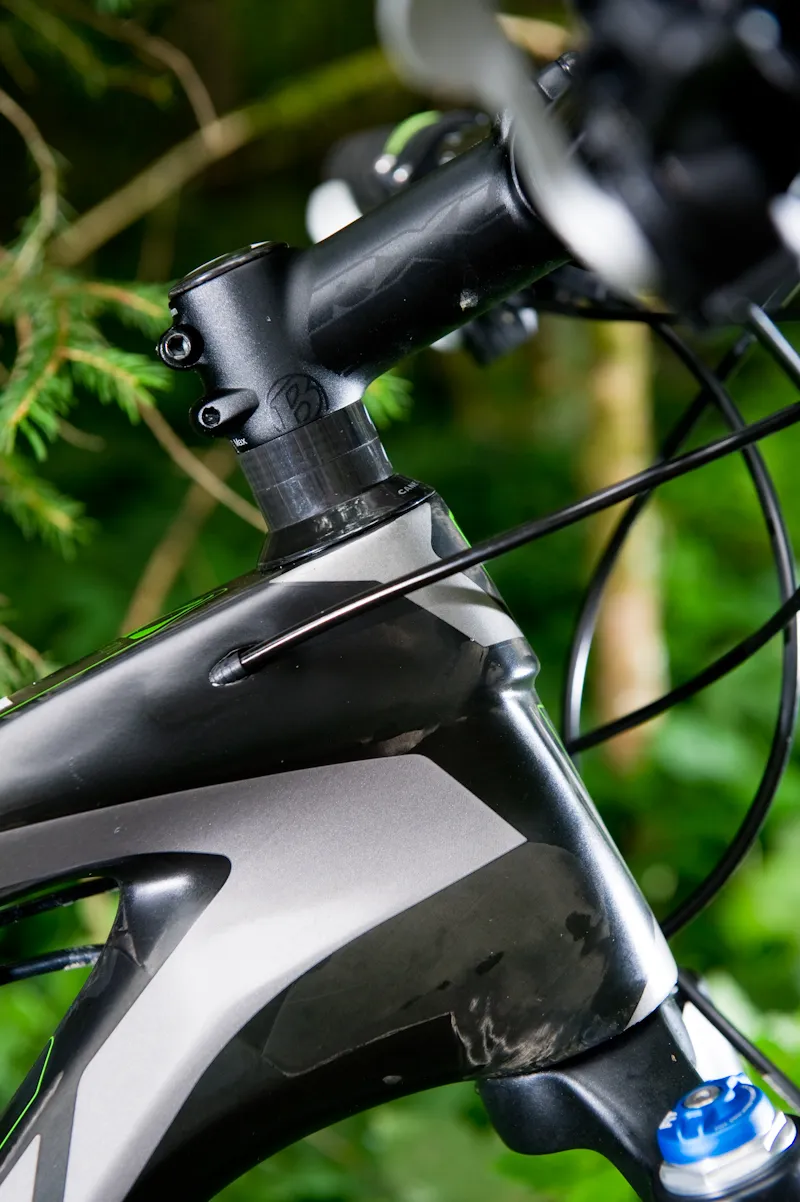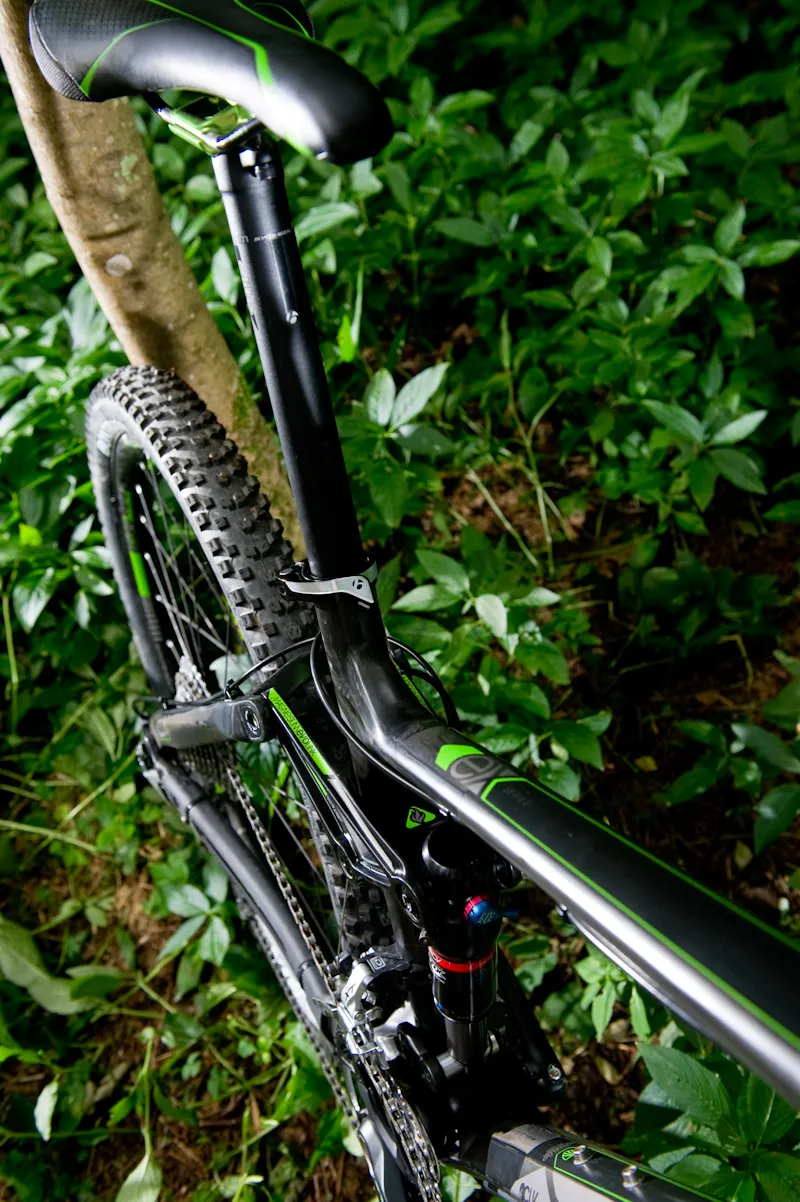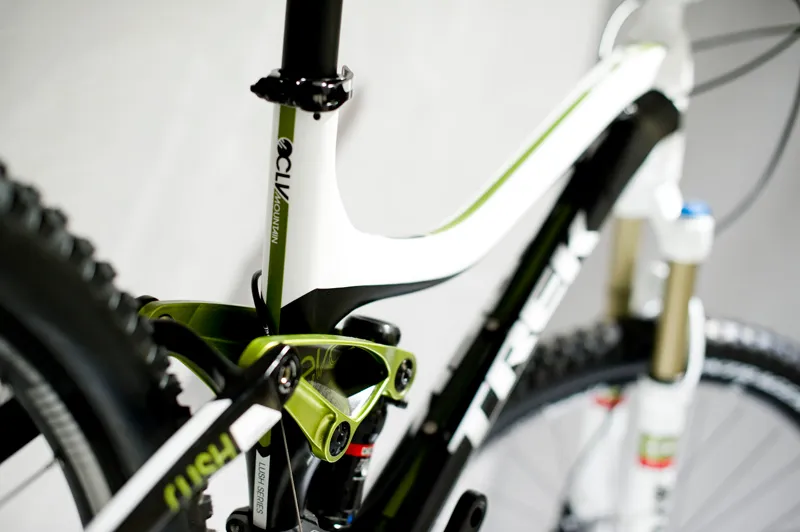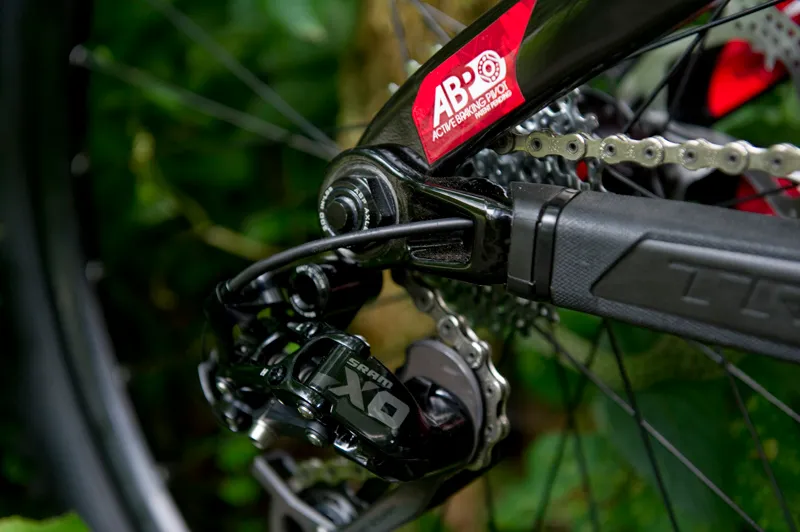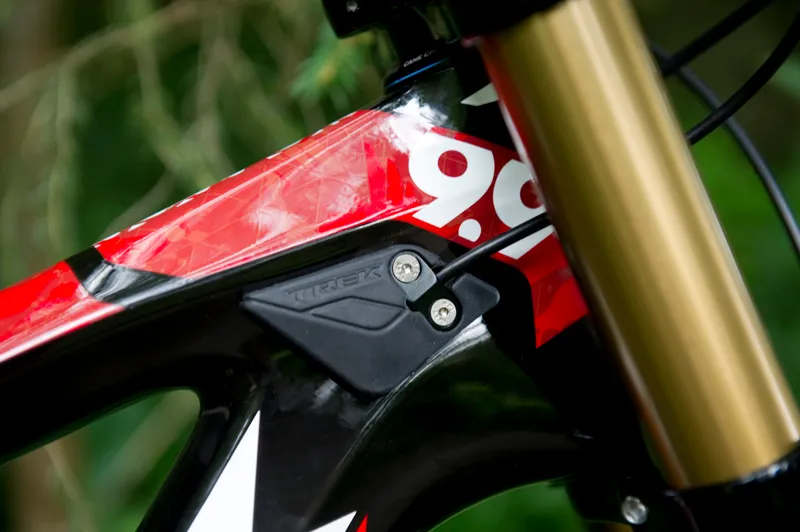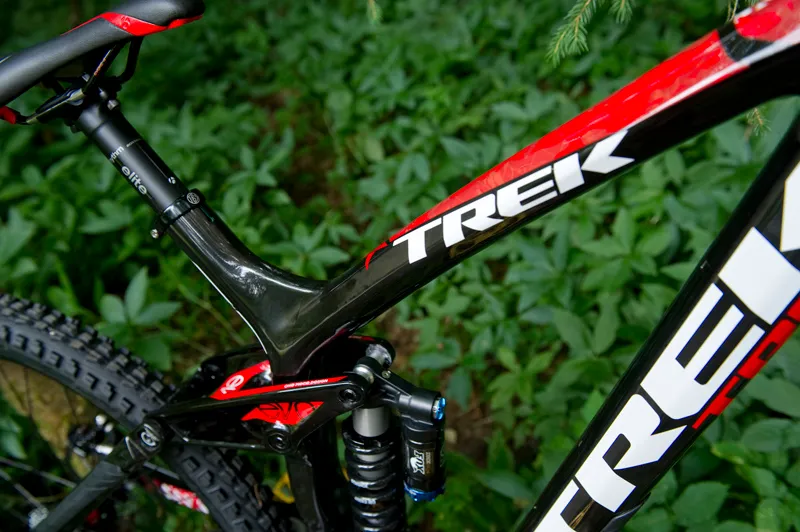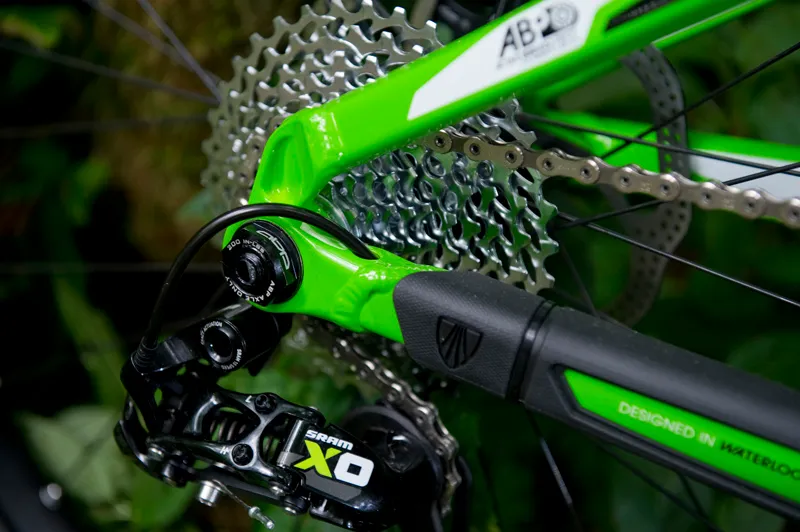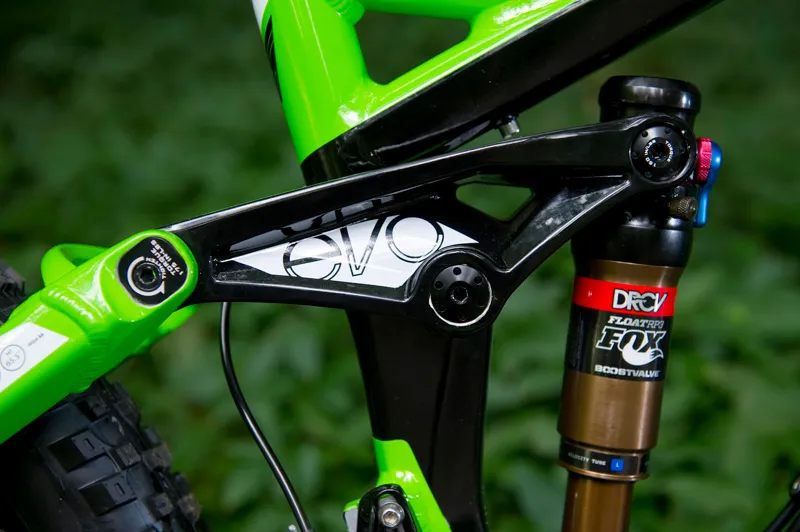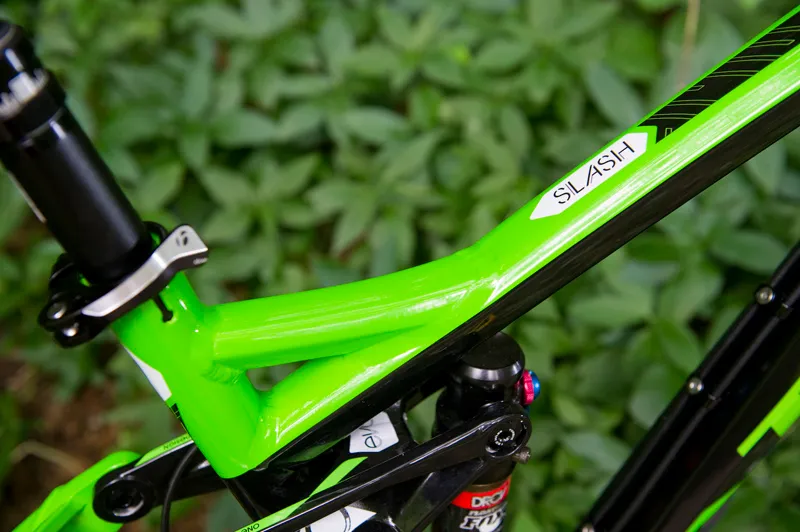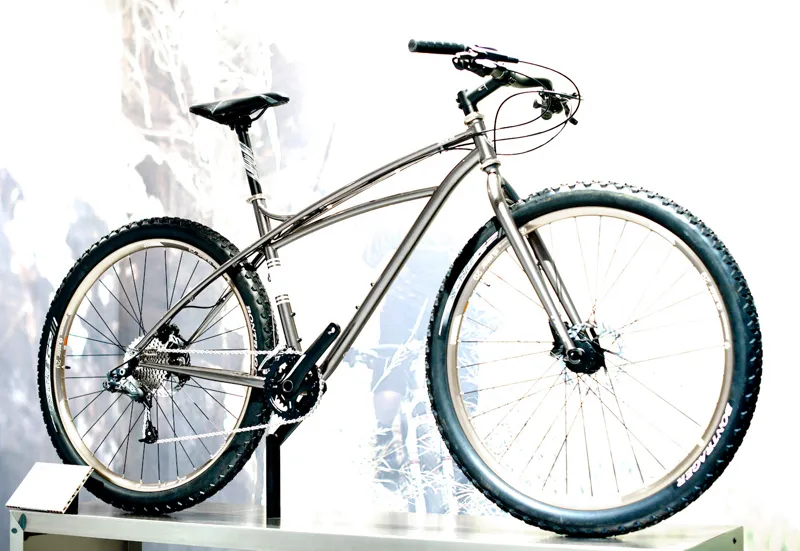“All new” is what Trek are boasting for their 2012 mountain bike line-up, and while most of the model names remain the same, the bikes revealed to us in the Austrian Alps this week represent as close to ‘all new’ as Trek can muster without ditching their proven and effective ABP suspension platform.
New suspension technology
At the core of most of the changes sits the expansion of their established Dual Rate Control Valve (DRCV) rear shock technology to Fox forks on their top trail bike models. Oddly for such an important development, it’s not a visible change, but it's one that's opened the gates to a raft of significant changes across their 120- and 150mm-travel bikes.
The brainchild of Jose Gonzales, Trek’s California-based suspension guru, the DRCV system incorporates a second, smaller-volume air chamber to balance bigger hits and allow full travel. In its new application, this secondary chamber is housed within the fork's compression rod, overcoming space restraints.
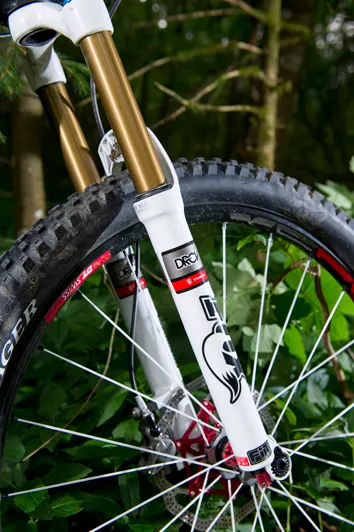
Twin-chamber DRCV technology can now be found in the Fox forks fitted to some Trek bikes, as well as the rear shocks
The result is a fork that genuinely manages small and big hits without losing performance at any point throughout its travel, thus balancing the established performance of the DRCV rear shock. This now sports a three-position RP3 platform damping switch, bringing a welcome new mid-point setting between the previously offered ProPedal 'on' and 'off' settings.
Trek Remedy
With the increased control of DRCV technology front and rear, Trek felt it was logical to slacken the geometries of the two bikes we got to test at the launch, the 150mm-travel Remedy and the 120mm Fuel EX. Both have lost a degree from their head angles, and use new tubesets throughout.
The 2012 Remedy (main image), available in three OCLV carbon models and three Alpha Platinum aluminium models, has been slimmed down in appearance to help distinguish its true all-day ride potential, while shedding 100g from the carbon and 70g from the Aluminium frame weights.
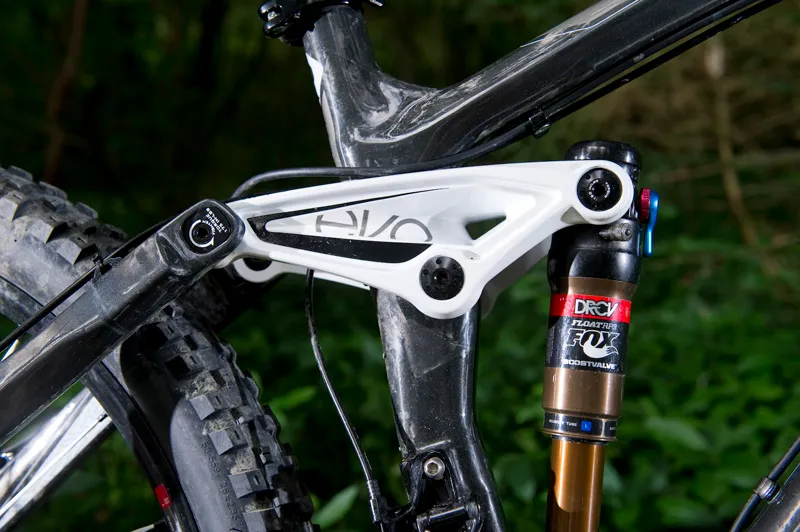
Trek's top-end 2012 bikes sport the new RP3 DRCV shock, designed in collaboration with Fox Racing Shox
The slacker geometry makes for a more confident feel on the steep alpine trails we rode, and is user-tunable via a small flippable plate, called the Mino Link, positioned at the seatstay/Evo link pivot. By undoing the bolt in each side of the Mino Link and flipping it 180 degrees, the head angle can be switched between 67° and 67.5°, with a corresponding bottom bracket height change of 10mm.
The switch takes only a minute to do, representing true trailside tweak potential, according to the terrain or your preference. Further enhancements to the Remedy include internal cable routing for both front mech and a Rockshox Reverb Stealth dropper post (specced on the 9.9 and 9.8), ISCG tabs as standard and switchable ABP convert rear axles, allowing use of either 142x12 Maxle through-axles or quick-release skewers.
Fuel EX
The big-selling Fuel EX range shares the trend for confidence-inspiring, slacker geometry, sporting a 68° head angle and new tube shapes for 2012. Front mech internal cable routing and 3x10 gearing are incorporated throughout the eight-model range (except for the EX 9.9, which has 2x10). The entire EX 9 line-up gets the RP3 shock, and the DRCV forks are specced down to the EX 8.
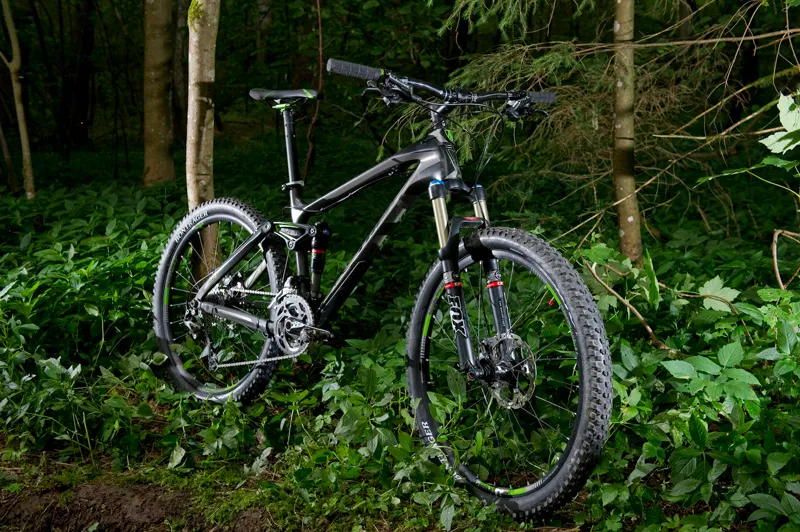
As with the Remedy, the Fuel EX is slightly slacker for 2012 and has new tube shapes
Lush
The 120mm platform has also been the focus for development of Trek’s Women Specific Designs, with a completely new take on the WSD Fuel EX range for 2012. Gone are simple tweaks to male-orientated geometries, to be replaced by a reworked frame and shock in the form of the all-new Lush.
At the heart of the four-model Lush range sits the idea that women riders generally appreciate a more confidence-inspiring bike, which for 2012 is delivered by way of a massively dropped, hydroformed top tube backed up by a lighter-riding suspension setup. Rather than merely soften suspension settings, Trek’s team have redesigned the rear triangle and rocker to rework the leverage ratio.
Meanwhile, a dropped top tube and lowered centre of gravity (while retaining bottom bracket height) add to the feeling of balance and confidence. The Lush Carbon and top-end Aluminium Lush SL both benefit from the new RP3 rear shock and DRCV fork.
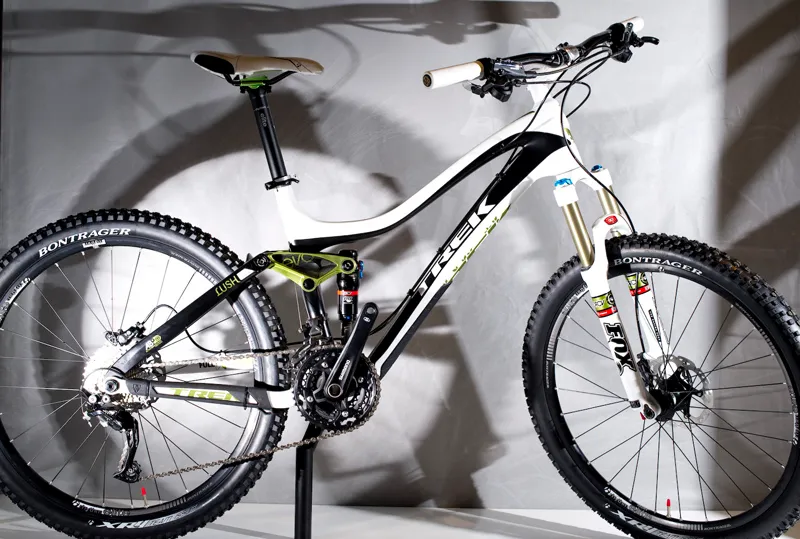
Instead of a women's version of the Fuel EX, there's now the female-specific Lush
Session 9.9
Gravity seekers haven’t been left out in the cold either for 2012, with two new bikes revealed in Austria this week. The race-winning Session will now be available in a full-carbon, 210mm-travel version, the Session 9.9, as ridden to victory on the World Cup circuit by Trek World Racing's Aaron Gwinn.
The new frame sheds 2lb to yield a sub-35lb/16kg overall bike weight and employs I-beam like material layup and honeycomb composites to boast the highest stiffness-to-weight ratio ever achieved by Trek. The Session range incorporates the same Mino Link switchable geometry seen on the new Remedy, and uses Cane Creek's Angleset E2 to offer maximum rider-customisation.
The 9.9’s 210mm of travel is achieved by a new leverage ratio, necessitating a retuned Fox DHX RC4 shock to do it justice. Up front, Trek’s engineers have developed the Hybrid Air fork, employing an adjustable air chamber to fine-tune its ride characteristics, and making redundant spring changes for different weight riders.
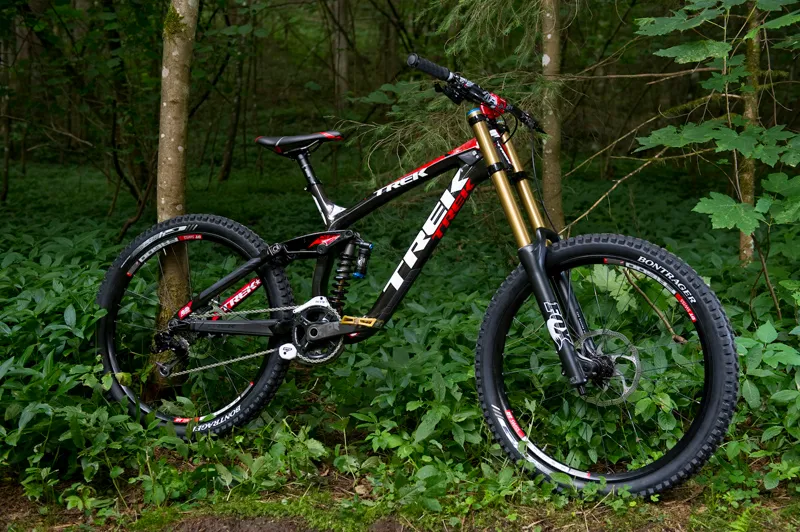
Trek's new sub-35lb Session 9.9 downhill bike has a carbon fibre frame and new Hybrid Air fork
Slash
Catering for the increase in Megavalanche/Downieville style enduro downhill riding Trek are releasing an all-new Slash model to replace the 2010 Scratch Air. The Slash addresses the need for an easier pedaling, lighter bike that's more capable of going head-to-head on demanding descents.
Pitched at the 60 percent downhill/40 percent uphill rider, it fits the need for a more butch Remedy, coming with a 66° head angle and 160mm of travel delivered by a Fox 36 TALAS or RockShox Lyrik fork up front and a Fox RP2 rear shock (RP3 on the Slash 9). Internal cable routing, ISCG tabs and Mino Link come as standard.
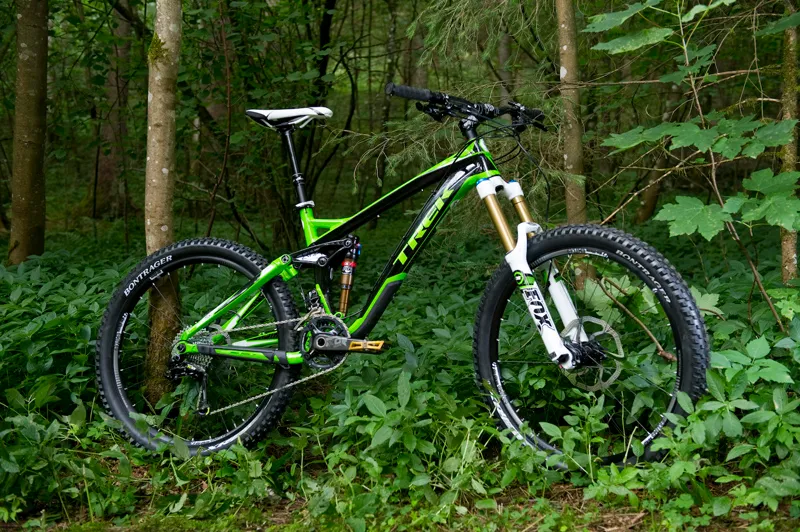
The Slash replaces the Scratch Air in Trek's line-up and is aimed at gravity riders who still plan to do a bit of pedalling
